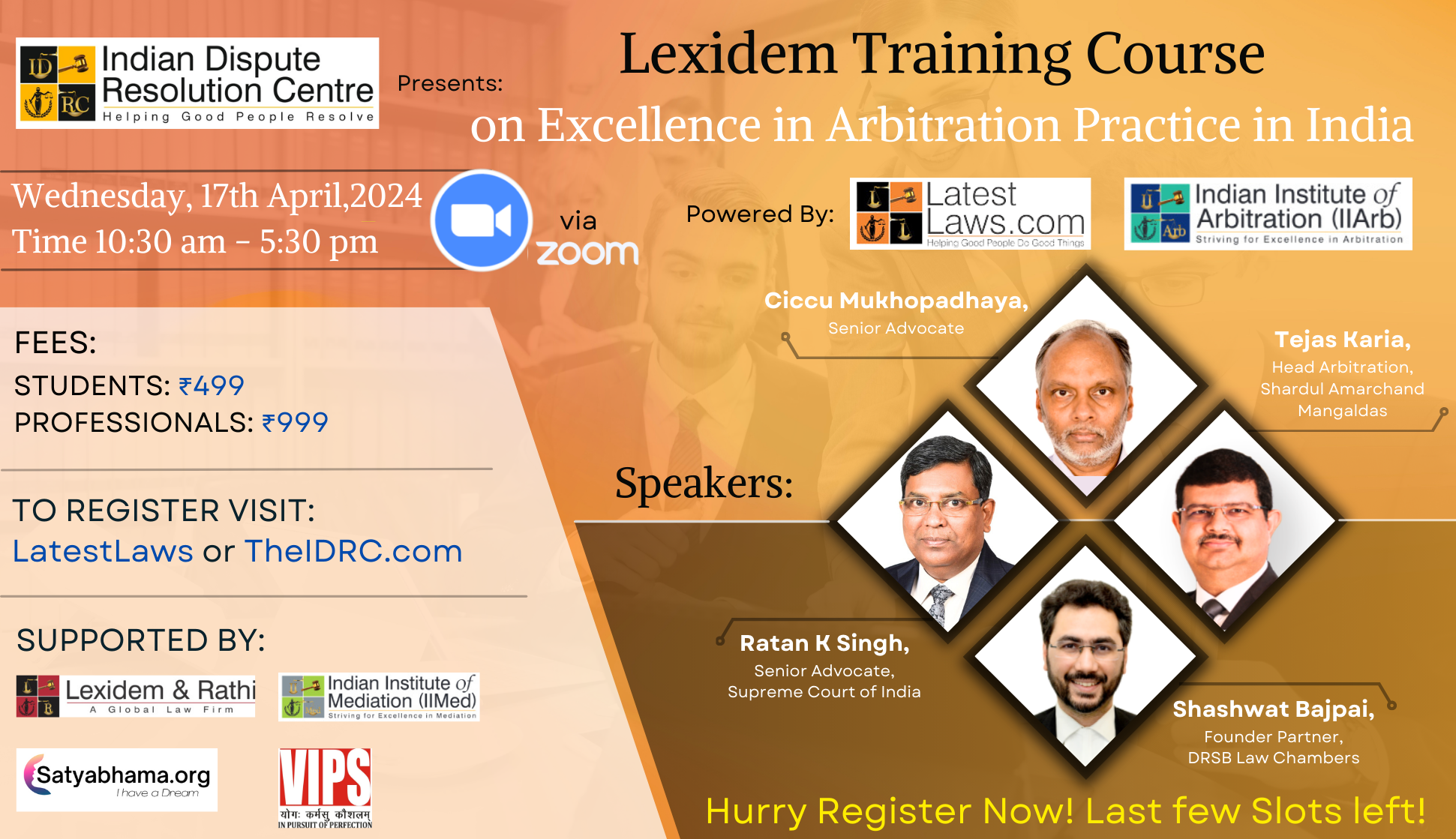The Author, Aastha Khurana, is a 2nd-year, BBA.LLB student at JEMTEC, Greater Noida, GGSIPU. She is currently interning with LatestLaws.com.
Technology affects in positive ways yet can also be disruptive. Such is Remotely Piloted Aircraft (RPA) which is commonly known as Drone. Drones are useful for military, commercial, civilian and even in humanitarian activities but their unregulated use carries a serious consequence that need to be addressed urgently. Despite use of drones in India, there are major policy gaps in the policy framework.
INTRODUCTION
Technological advancements have changed our life in the numerous ways be it the way wars are fought, business operations or daily activities. Drones are also termed as Unmanned Aerial Vehicle (UAV), Unmanned Aircraft System (UAS) or Remotely Piloted Aircraft System (RPAS). Military in India is no more a stranger to the drones as they are used for tracking enemy movements, for border patrols, search and rescue missions and emergency services.
In Indian neighborhood, Unmanned Combat Aerial Vehicles (UCAVs) have been put to significant use in fighting al-Qaeda and Taliban in Pakistan and Afghanistan. In fact, in the late 1990s, as the hunt of Osama bin Laden intensified, Afghanistan became the laboratory for the US’ development of armed drones. However, only after the 9/11 terrorists attack in the US, Washington sanctioned the use of drones. Since then, drones have been increasingly used for targeted killing and in air support for ground troops across both Afghanistan and Pakistan. As former Director of the Central Intelligence Agency (CIA) Michael Hayden once wrote-“Targeted Killing using drones have become part of America way of war”.
Besides in military use, drones have penetrated commercial sphere as well, with business developing drones in increasing diverse roles. One of the largest online suppliers of drone Amazon said in 2013 that it wanted to use drones to deliver the packages and has been testing accordingly. The company obtained permission in 2015 to test drones in the US in April 2015, and in the UK in 2016. Now drones are being used for development purposes, including aerial mapping, and for monitoring critical infrastructure such as ports and power plants.
Today global market for the drones has grown and so have the debates on the legal, regulatory, and even moral issues are around their use. So far, there is no clear global mechanism to regulate drone activities. There are also issues around the accidents, air collusion, safety and security of the use of drones. Each of these issues require a comprehensive framework for effective regulation in the civilian airspace for domestic security, privacy and legal concerns to be addressed effectively. India, a developing country plays a proactive role in shaping the global norms and regulations, not only as the evolution of drone technologies can have an impact on India’s security in multiple ways, but also because it is better for India to be a part of any new global effort as a norm shaper while at the same time protecting the country’s interest. Several stopgap measures have been taken by the state and the central authorities to stop these gaps whether in addressing the issues of control, or response mechanism in the event of an incident, questions of privacy and trespass, air traffic, terrorist threats management, and legal liability. Potential large-scale use of drones in agriculture and infrastructure is the tool in the development of India.
USE OF DRONES IN INDIA: EVOLUTION OF POLICY
Much like in other countries, drones have multiple applications in India in the civilian domain such as commercial sector for mapping and information gathering, in addition to the military domain where its uses include surveillance and intelligence collection. However, the use of drones have fraught with problems and uncertainties in the absence of well laid out standards, regulation and operating procedures, One of the first Indian notification on the subject came in the form of a Public Notice issued by the Office of the Director General of Civil Aviation (DGCA), India’s civil aviation regulator, on 7th October 2014. The document was useful for informing potential operator that the civil operations of UAS will require approval from Air Navigation Service provider [Airport Authority of India], defense, Ministry of Home Affairs, and other concerned authorities besides the DGCA. DGCA is the process of formulating the regulation (and globally harmonizes those) for certification & operations for use of UAS in the Indian Civil Airspace.
Two years later, the DGCA released a set of draft guidelines in 2016 on the use for civilian or recreational purposes. The DGCA invited comments on this circular from various stakeholders for a period of 21 days as decided by the Ministry of Civil Aviation. After a year and half of inaction on the previous guidelines, in October 2017 the DGCA released a new set of guidelines with the aim to finalizing them by end of the month but the guidelines were mere product of dire necessity, they do not exhibit enough foresight. There have been several incidents in the past few years that show the dangers of unregulated use of drones for all stakeholders including the general public. Despite the near-blanket ban on drones in 2014, there have been a worryingly high number of sightings of UAVs in different areas across the country which further highlights the need of effective regulations to be enforced at the earliest. It cannot be emphasized enough that there in a need for a more nuanced regulatory framework with appropriate recommendations including tracking issues such as a liability in case of mid-air collisions. India must lay out a policy framework that would address the regulatory legal. Operational, licensing and liability issues around the use of drones.
According to the 2016 guidelines only Mini and Macro drones needed to be flown with VLOS. 2017 guidelines did a little more coverage than 2016. 2017 regulations stipulated that all UAVs, irrespective of weight category are to flown maintaining Visual Line of Sight (VLOS) while most of the countries impose such as limit on lighter drones, the blanket imposition of VLOS is going to stifle several uses of drones. However, 2017 guidelines still fail to cover issues such as legal liability and import controls and did not account for a mechanism ensuring the safe operations of drones at low altitudes, nor did they have provisions for ensuring that there is no interference by two drones in each other’s operations. According to the guidelines, drones operators will need to obtain a Unique Identification Number (UIN) for their UAV and security clearance from the Ministry of Home Affairs before they can get their drone in the air. The UIN number must be obtain by submitting following documents by the operator: the documents include the purpose for drones, drone specification including manufacturer name, weight, size, type of propulsion system, flying equipment capabilities. The operator will also have to provide a copy of flight manual and maintenance guidelines as issued by the manufactures as well as verification proofs. The changes in the 2017 guidelines are certainly a positive step by the DGCA. Other positive steps that need to be taken are with respect to following:
POLICY GAPS
While the DGCA had taken the first step of framing draft guidelines for the use of UAVs, there remain several gaps that must be addressed, keeping in mind the need for balance between security concerns and legitimate uses of drones in a variety of civilian sector.
QUALITY GAPS
The most striking absence in the regulations is that of import standardization. There is need to for standardization and quality control. No legislation had been passed addressing this aspect by the DGCA. The department of customs issued a notice placing the drones in the list of dutiable items, making it mandatory to declare that at the time of import. However, it is still not clear that when the drones are banned for the civil non-governmental entities use then why customs allows them to be imported. This again underscores the lack of coherence between the state authorities and DGCA. There is no focused regulation regarding domestically produced drones and industries. Alarming fact is that there are no guidelines in ascertaining the very airworthiness of UAV.
STANDARD OPERATING PROTOCOL FOR INCIDENTS
There has been no protocol formulated by the authorities for incident management in the event of an accident. In 2015, for example, an unidentified man was spotted flying a drone close to the President House (Rashtrapati Bhavan) and the Indian Parliament. The police were confused and had uncoordinated response which was very ineffective to such an alarming situation. The man reportedly was confronted by a person from the media, after which he left on his own accord: he has not been indentified since. Media reports say the Delhi Police has issues standard instructions to the personnel in this area in responding to similar situation, making India Gandhi International Airport no fly zone and sanctioning police officers to shoot down any UAVs sighted in its vicinity.
In 2015, in Bhopal UAC bearing Hanuman idols flew over the city for the considerable amount of time without provoking a reaction from the police. The incident was not only a safety hazard but could have sparked off religious tensions.
THE PRIVACY QUESTION
When it comes to usage of drone, the question of privacy is an intricate problem, bringing with it the controversial debate of security versus privacy. Drones operated by non governmental agencies pose a major threat to existing privacy laws. Most UAVs have constantly transmitting cameras that often operate in high definition. Intended infringement of privacy is quite easy, but drones also present the case of unintended invasions. This aspect makes it more difficult to ascertain infringement of privacy under existing laws in India.
The draft included only a single line on privacy, it is vaguely worded and appears inadequate in tackling such an integral issue.
The second broad question that arises is the regulation of governmental agencies using drones for regulation. The Indian government is in the process of considering the revision of certain sections of Information Technologies (IT) Act. The IT Act covering various questions of privacy and technology including the concepts of data protection and distribution. The only other law that can be applied on the privacy issue is the Article 21 of the Indian Constitution.
TERRORIST THREAT MANAGEMENT
With the rapid advances in the various functions that the drones undertake, there have been a several instances of keen terrorist organization using them to carry on their activities. Policymaking needs to be robust in this sphere as well, to ensure that security agencies are prepared to deal with threats of this nature. Worryingly, ISIS in 2018 started using drones in their operations. Its fighters in Iraq recently used a drone as an explosive to attack Kurdish forces. The drone was shot down by Kurdish forces, who initially believed it to be surveillance drone but realized when it exploded that it was embedded with most materials that would be required to make a conventional bomb.
In many places across the world, law enforcement agencies have started developing increasingly innovative techniques to bring down rogue drones.
AIR TRAFFIC MANAGEMET
Drones present a new dimension in the management of air traffic as they are neither easy to track as conventional aircraft nor are as easy to communicate with.
In an extremely dangerous incident, an Air India fight almost collided with UAV at Leh airport in 2014. The Aircraft Traffic Control at Leh operated by the Indian air force, had no information regarding the UAV that was flying close to the runaway and undetected on radars.
The Indian government had constituted a committee to ensure the smooth upgrade of ATC units to accommodate UAVs in the Indian airspace.
LEGAL LIABILITY
The Draft 2018 DGCA Guidelines assign the legal responsibility of UAV to their operators. The assumption is that operator would ensure that the vehicle is airworthy and functioning as expected.
ISSUES OF TRESPASS
Another aspect of legal liability are the rules governing trespass of private property by drones. However, with the advancement made in aviation society tool cognizance of the fact that there was a limit to the extent of private property both above and below property. Yet, there is no legislation that exists that definitely ascertains its extent above the ground.
GLOBAL GOVERNANCE OF DRONES
Globally, rules and regulations regarding the use of drones are still in their infancy. Even though the India is the small operator than US, China and other developed countries but exact legislation is there.
So far, at the, multilateral level, the International Civil Aviation Organization (ICAO) is the platform for framing rules of the road for drone regulations.
UAV COACH 2020
General rules for flying a drone in India:
- Foreigners currently are not allowed to fly drones in India. For commercial purpose they are required to lease the drone to an Indian entity that in turn supports to acquire UIN and UAOP from DGCA.
- All drones except those in the Nano category need to be registered and obtain UIN
- Drones pilots must maintain a visual line of sight while flying
- A separate permission is required for the commercial drone operations
- Drones cannot be flown in areas specified as “No Fly Zones” which includes airports and military entities.
CONCLUSION
There are various questions concerning ethics, regulation and implementation that exist in the domain of drones. These questions need to be carefully addressed, keeping in mind the extant legal and moral principles and adapting them to the rapid technological advances to create effective governance regime for UAVs in India. India must also examine the prevailing policies in other countries to adopt the best practices as it formulates its regulatory framework. Guidelines and circulars issued by the governments and multilateral agencies like ICAO need to be converted into legal and policy instruments that would have a binding effect on governments.
Picture Source :




























